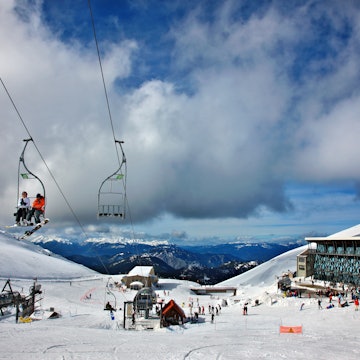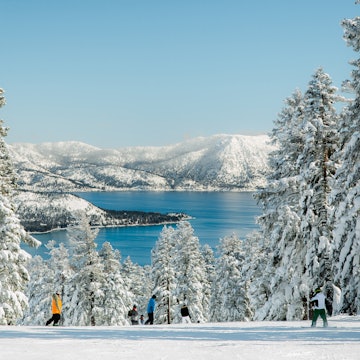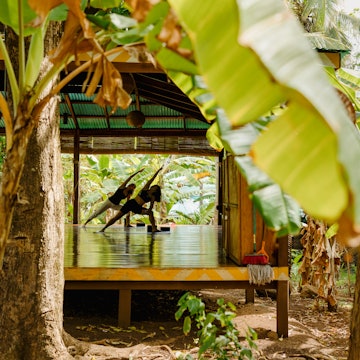
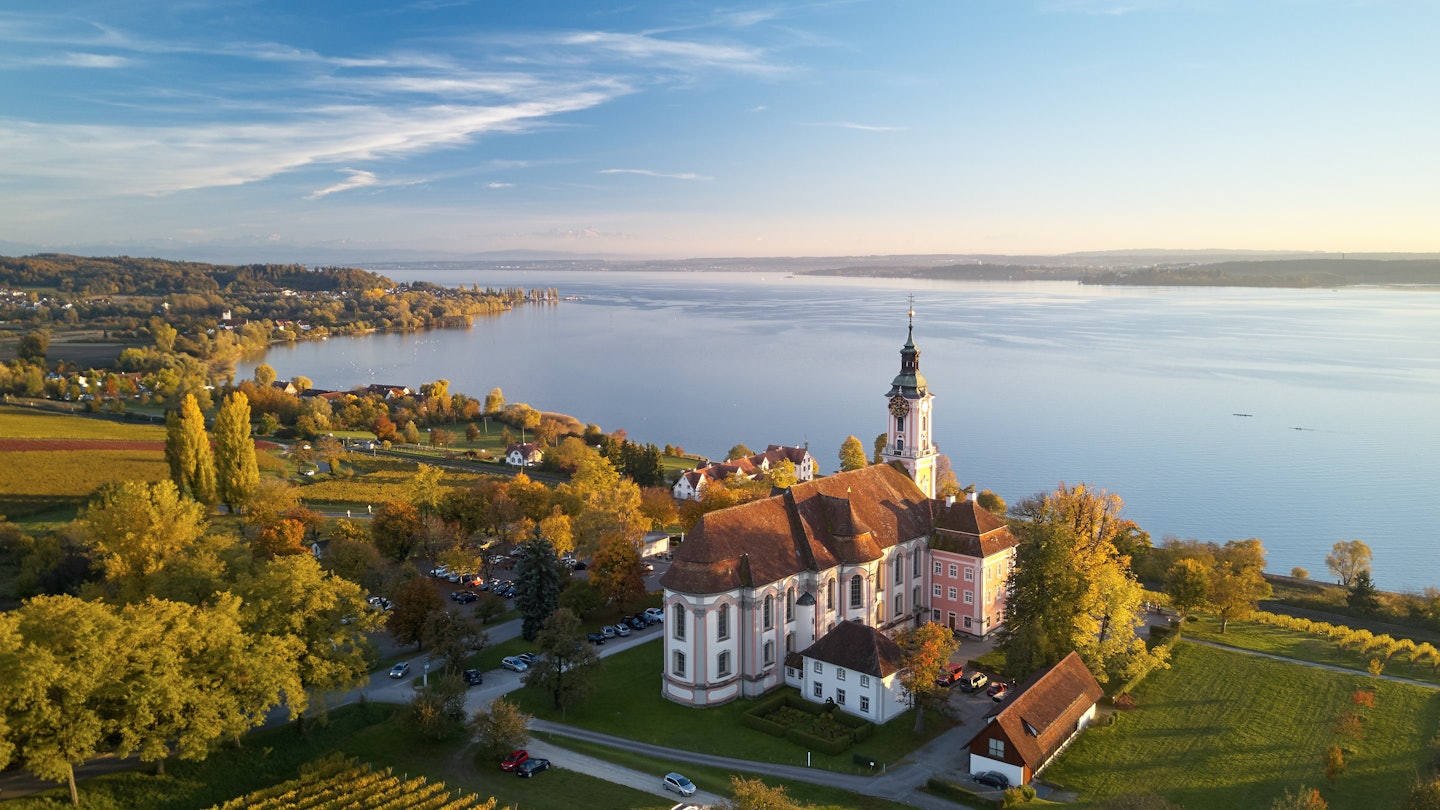
The German side of Lake Constance, known as Bodensee, is an alternative to more popular wine regions. Adobe Stock
Bordeaux, Burgundy and Tuscany – these are the European wine regions whose fame has been forged over centuries. Their top vintages can command staggering prices, some even reaching a couple thousand euros per bottle. It’s the stuff of collectors and connoisseurs, which makes them feel a little off limits to everyone else. Fortunately, there are plenty of alternatives in Europe that are little known or little visited but still produce fabulous wines. Often they’re affordable and easy-drinking, which is perfect when you’re on vacation and just want a relaxed experience.
With that in mind, here are some of the underrated wine regions in Europe that should be on your radar. A few are already tourist hot spots but somehow their wines are still waiting to be discovered. Others are known to serious wine lovers but still haven’t found their place on the tourist trail. What they all have in common is great wines at great prices, with some great experiences to boot.


1. Bodensee, Germany
Best for outdoor lovers
Lake Constance is shared between Germany, Austria and Switzerland, and there are vineyards planted along every shore here, often by smaller, family-owned wineries. The German side – known locally as Bodensee – stands out for having the largest area under vine, generally on steep slopes leading down to the water.
The region has a major claim to fame in the wine world: the aromatic grape variety Müller-Thurgau was invented here. A cross between Riesling and Madeleine Royale, it was created to be delightfully easy drinking but with a hardiness to thrive in cooler climates. In the Bodensee, that translates to white flowers and green apples on the nose, and a zippy, citrusy palate. On the red side, Spätburgunder (Pinot Noir) is the most popular variety, but it can be a bit hit or miss depending on whether the grapes get enough sun to sufficiently ripen, so tread carefully if that’s your preference.
There’s a lot to see and do in the area. You might pedal the Lake Constance cycle path, for example. The 260km circular route connects the three nations and can be tackled in several stages. Alternatively stay in Germany and bike from winery to winery. A good option is Staatsweingut Meersburg (State Winery of Meersburg), which offers tastings throughout the year and vineyard visits on select dates between April and September. There’s also a tavern on site where you can have lunch overlooking the vines. Another option is Weingut Schmidt am Bodensee, which does pretty decent red wines and very good white wines. There’s a holiday home on the estate too so you can stay amid the vines. Make sure you stop at Mainau Island with its 150-year-old arboretum and the historic Meersburg Castle, first built during the 7th century.
Planning tip: The vineyards are at their most glorious in the summer months, but spring and fall are better if you’re planning to get active.


2. Jerez de la Frontera, Spain
Best for culture
There’s nothing quite like sherry, the Spanish fortified wine made from a blend of Palomino, Pedro Ximénez, and Moscatel grapes that might appear as a bone-dry fino or a richly sweet PX (for Pedro Ximénez). Sherry's production involves a unique blending and aging process known as the Solera system. It mixes new wines with old ones in oak barrels, which keeps the flavor constant over time. And as the wine ages, it picks up the funky, nutty notes that are so characteristic of sherry. You can learn all about this in much more detail in Jerez de la Frontera, the southern Spanish city that, along with Sanlúcar de Barrameda and El Puerto de Santa María, makes up the sherry triangle.
The bulk of the sherry is produced in Jerez, though that’s hardly surprising for a city that lent its name to the wine. And while there are vineyards all around it, this is one place where you’ll learn far more by visiting the big sherry houses that have a base within the city. Bodegas Tío Pepe, Bodegas Lustau, and Bodegas Fundador are among the best known ones here.
Besides sherry, Jerez is a good place for soaking up the culture and traditions of the Andalucia region. See the Moorish architecture of the Alcázar de Jerez, share plates of tapas at Tabanco Plateros, and finish at Tabanco El Pasaje for a flamenco show.
Planning tip: Seville, with its international airport, is a natural gateway to the region, but you can also couple Jerez with a visit to Cádiz for its urban beaches.

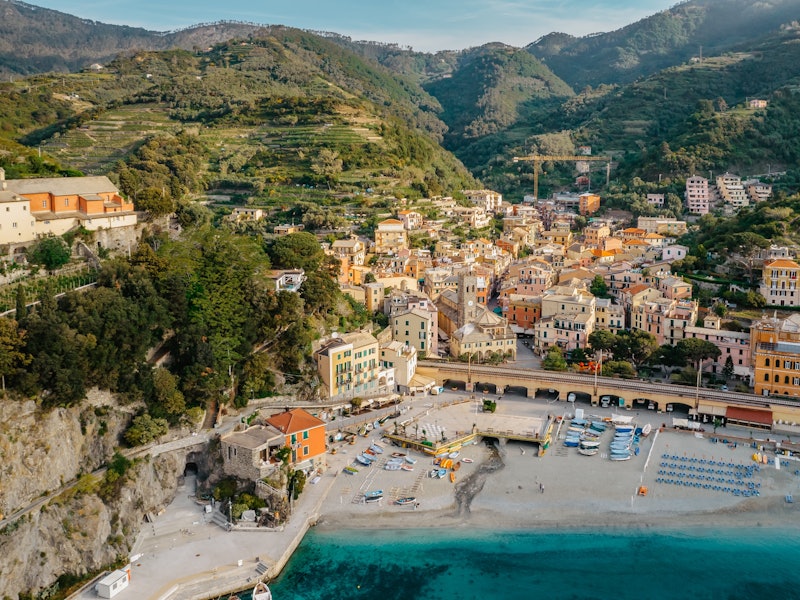
3. Cinque Terre, Italy
Best for sweet wines
Cinque Terre might be overrun with tourists but most day-trippers are just there for the photo from the bottom of the hill. Most seem to miss the fact that it’s also a wine producing region. There's a good reason for that: there isn’t a whole lot of land to go around. The five villages on this stretch of the Ligurian coast are pretty much stacked one on top of another on a slope so steep it might as well be a sheer cliff face, so there are no wide open spaces to plant neat rows of vines. Instead, most are planted on treacherously steep terraces that can only be maintained by hand.
The labor of love is well worth it, though. As well as crisp, dry white wines made from Bosco, Albarola and Vermentino grapes, the region is also home to an intensely sweet wine called Sciacchetrà. It’s a passito, meaning the grapes are picked and dried on straw mats before being pressed and made into an amber-colored wine that smells like honey and peaches and is lusciously sweet. If Cinque Terre is already part of your travel plans, stop by one of the wineries, such as the cooperative Cantina Cinque Terre or the family-run Cantina Cheo, for a more meaningful visit than an Instagram snap of some colorful buildings by the sea.
Wine tip: Family-run Terra di Bargòn has tours that take you to their hand-tended terraced vineyard where they grow the grapes for their small production Sciacchetrà.


4. Bergerac, France
Best for gourmet travelers
About 100km east of Bordeaux is Bergerac, its lesser-known, more affordable and equally pretty cousin. Like Bordeaux, Bergerac makes big, beautiful red wines with a blend of Merlot, Cabernet Franc, and Cabernet Sauvignon, while citrusy white and sweet wines use Sémillon and Sauvignon Blanc grapes. The landscape is all rolling hills and medieval villages, though it’s the Dordogne rather than the Garonne that runs through it. And while Bordeaux got a head start in winemaking, the Romans didn’t leave Bergerac too far behind. Yet, for some reason, Bergerac continues to fly under the radar. No matter. It helps keep Bergerac affordable for everyone else.
While here, the thing to do is to stay in a château-turned-hotel, and hop between family-run estates with centuries of history. Good hotel options include Château les Merles, which has its own nine-hole golf course, or the Château des Vigiers, where you only need to step outside to be surrounded by vines. Take regular breaks for casse-croûte (light bite), preferably ones involving truffles from the wider Périgord region or the duck from Landes. And when that’s all done, explore the caves at Lascaux, visit the medieval old town, or book a barge cruise.
Planning tip: The region of Périgord hosts a truffle festival every January. Visit Bergerac then to see truffières haggle with buyers over how much to sell that morning’s find.
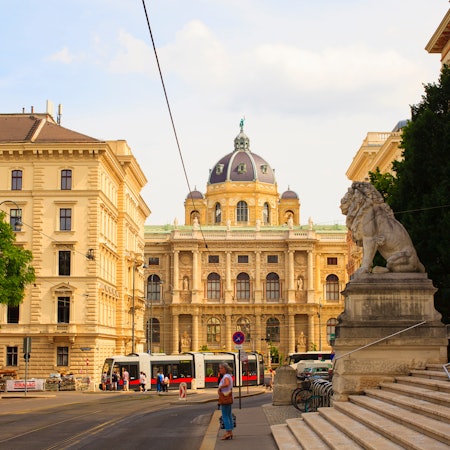

5. Vienna, Austria
Best for an urban break
With 588 hectares under vine within city limits, Vienna is home to one of the largest urban wine regions in the world. You’ll find both red and white wines here, although the latter is more prevalent. And while there are wines made from the usual suspects like Riesling, Grüner Veltliner, Merlot and Pinot Noir, there are also some unusual options. Most of the red wines are made from Zweigelt, for example, an Austrian grape variety known for cherry notes and its tart finish. For white wines, the main “variety” is Wiener Gemischter Satz. This isn’t actually a grape variety but a “field blend,” where multiple varieties of grapes are grown together at random and harvested and fermented at the same time, as if they are a single variety.
The best thing about Vienna’s urban wineries is that they’re easily accessible via public transport. Locals will hike between vineyards owned by wineries like Müllers Heuriger and Weingut Cobenzl at the weekend, stopping at the on-site taverns for refreshment before moving on. For visitors, that means being able to enjoy everything else the city has to offer, from visiting Schönbrunn Palace to seeing art at the Albertina. Most of the wineries are on the west side of the city, but you’ll want to be based in the city center to enjoy easy access to the rest of Vienna’s charms. Hilton Vienna Plaza is a good option as it’s just a short walk to the town hall and the museum district.
Planning tip: Make sure you bring cash if you want a drink or two. Most of the taverns will only take cash.






